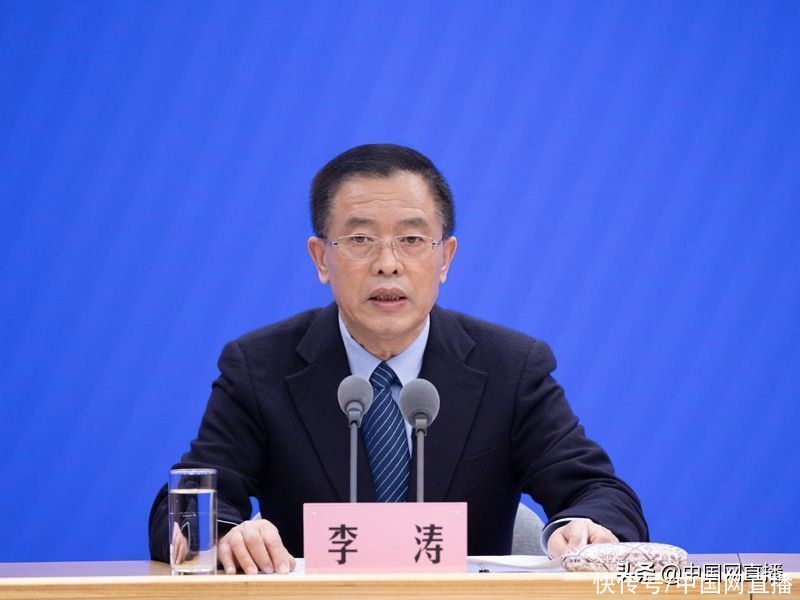The National Health and Health Commission is scheduled to hold a “Everything is for the health of the people – our ten years in the past ten years” will be held at 10:00 a.m. on April 25 (Monday). “Themed press conference, the Occupational Health Department of the National Health and Health Commission, the responsible comrades of the Occupational Health Center and experts from the Chinese Center for Disease Control and Prevention will attend. Introduce the main achievements and highlights of occupational health work since the 18th National Congress of the Communist Party of China, and answer questions from the media. China.com live broadcast, the following is the text record:

Photo: China Net Yang Jia
CCTV reporter:
Workers who suffer from occupational diseases often encounter difficulties in diagnosis. The main reasons for these problems are What? How to solve this problem in the future? thanks.
China CDC Occupational Health Chief Expert Li Tao:
Thank you for your question. Your question is also one of the hot issues that the society pays more attention to. I can simply answer your question. Occupational disease diagnosis is not difficult in medical technology, but it is difficult to confirm the labor relationship between sick workers and employers, and to determine the causal relationship between exposure to occupational disease hazards and the disease. The diagnosis of occupational disease is essentially the diagnosis of the attribution of a disease. It is different from the general disease diagnosis. In addition to making a judgment on whether the patient is sick, it is mainly to determine which household unit the worker is exposed to occupational disease hazards. , which occupational disease hazard factors are exposed to, and whether the degree of exposure to occupational disease hazard factors is enough to cause workers to become ill, the difficulty lies in this aspect.
According to the Occupational Disease Prevention and Control Law, occupational disease diagnosis requires a comprehensive analysis of the patient’s occupational history, exposure history to occupational disease hazards, the detection results of occupational disease hazards in the workplace, the patient’s clinical manifestations, and Auxiliary examination results, differential diagnosis with other diseases, can make the diagnosis of occupational diseases. We know that many workers, especially migrant workers, often worked in many employers before they became ill, and some workers even did not sign labor contracts with employers. The labor relationship between the employer and the employer cannot prove the occupational disease hazard factors and the degree of harm that they are exposed to. At this time, the necessary evidence for the diagnosis of occupational diseases is lacking, and the employers who need to bear the responsibility cannot be identified, which may eventually lead to the failure of the diagnosis of occupational diseases and the inability to enjoy the relevant treatment of occupational diseases.
The country attaches great importance to the difficulty in diagnosing occupational diseases reflected by the society. Our country has revised the Law on the Prevention and Control of Occupational Diseases three times by the Standing Committee of the National People’s Congress, which involves the improvement of the occupational disease diagnosis and appraisal system. First, collective diagnosis by more than three physicians who have obtained occupational disease diagnosis qualifications has been abolished. In addition, the administrative examination and approval of occupational disease diagnosis institutions was cancelled, and the health administrative department was required to strengthen the standardized management of occupational disease diagnosis institutions.
According to the revision of the Law on the Prevention and Control of Occupational Diseases, the National Health and Health Commission organized the revision of the “Administrative Measures for Occupational Disease Diagnosis and Appraisal”, which will be announced and implemented in 2021. The new “Occupational Disease Diagnosis and Appraisal” The Administrative Measures have the following characteristics: First, it is clarified that the occupational disease diagnosis certificate shall be signed by a licensed physician who has obtained the occupational disease diagnosis qualification, and shall be reviewed and stamped by the medical and health institution undertaking the occupational disease diagnosis. The second is to simplify the information required by workers for occupational disease diagnosis. The new method stipulates that workers only need to provide the occupational disease diagnosis materials that they have mastered, and the materials for occupational disease diagnosis and identification are mainly provided by the employer. The third is to clarify the time limit for occupational disease diagnosis for the first time, which greatly shortens the time for occupational disease identification and further facilitates the diagnosis and identification of patients. Fourth, according to the Law on the Prevention and Control of Occupational Diseases, if there is no evidence to deny the inevitable connection between the occupational disease hazard factors and the clinical manifestations of the patient, it should be diagnosed as an occupational disease. According to this regulation, the new method defines the connotation of evidence and proposes corresponding implementation regulations. In short, under the current legal framework, the revised management methods for occupational disease diagnosis and identification have tried their best to facilitate the occupational disease diagnosis and identification of patients. In the next step, on the basis of full investigation and demonstration, we will further actively promote the revision of the Law on the Prevention and Control of Occupational Diseases with relevant departments, and further effectively promote the facilitation of occupational disease diagnosis and identification.